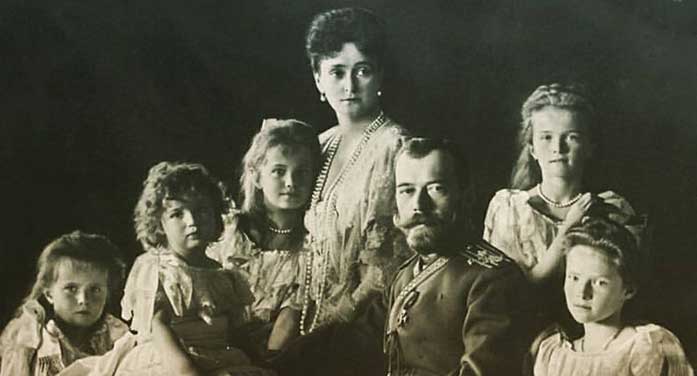 Last week’s column drew from British historian Dominic Lieven’s current book about emperors and empires. Called In the Shadow of the Gods, it’s an exploration of the characteristics that contributed to dynastic success or failure.
Last week’s column drew from British historian Dominic Lieven’s current book about emperors and empires. Called In the Shadow of the Gods, it’s an exploration of the characteristics that contributed to dynastic success or failure.
Lieven’s penultimate chapter deals with the challenges modernity posed to hereditary dynasties. As the environment changed rapidly, the crowns adorning various heads became less secure.
Hereditary dynasties are an artefact of pre-modern history. They sprang from a time when politics and religion were fused, society was largely rural and levels of economic development were low. Yes, there was creativity in the arts and sciences. And religious upheavals – such as the European Reformation – were capable of generating significant turbulence. But the pace of socio-economic change was generally modest.
Then came the 19th century.
The industrial revolution, its attendant urbanization, the introduction of mass literacy and the rise of ethnically-inspired nationalism shook things up. Social dynamics and expectations were upended, and traditional links were frayed. What had more or less worked for centuries was now under new pressure.
| RELATED CONTENT |
| Political dynasties: destiny fulfilled or disaster in waiting? By Pat Murphy |
| The rise and fall of the Romanovs By Pat Murphy |
| A love letter from Canadian LGBQT artist to the Queen By Owen Grant Innes |
| More in Books |
Take, for instance, the rise of mass-circulation newspapers. Suddenly, the concept of public opinion became a more immediate consideration. Where it used to be the case that monarchs had to manage aristocrats and priests, now there were more players to be handled, assuaged and accommodated.
In coping with the rise of nationalism, some dynasties could adapt old playbooks.
Associating the throne with the deity was a long-established strategy to convey legitimacy and make challenges more problematic. Now, identifying the dynasty with the new upsurge in national feeling became equally useful. The monarch as the physical embodiment of the nation was a potent addition to the royal arsenal and lavish pageantry became a valuable asset in the toolbox.
But not all dynasties were equally positioned to navigate this new world.
Because of their empire’s multi-ethnic nature, surfing the nationalist wave was a difficult proposition for the Habsburgs. Nationalism’s emphasis on identity meant that the empire was being pulled apart by its own diversity. And no artful symbolism from the imperial centre in Vienna could mitigate that.
The First World War administered the last rites to four major dynasties – the German Hohenzollerns, the Austrian Habsburgs, the Russian Romanovs and the Ottoman Osmans. Whether, and how long, they’d have survived if there’d been no war is a matter of conjecture. Adaptation to changing circumstances was crucial and some were more open to it than others.
The Romanovs were probably the keenest in trying to hold on to what Lieven describes as “the traditional model of sacred and absolute monarchical sovereignty.” But even they weren’t entirely resistant to change.
Alexander II, who ruled for 26 years between 1855 and 1881, was something of a reformer. He liberated the serfs, changed the legal system and introduced a degree of representative local government. Still, there were strict limits to what he perceived as desirable.
In Alexander’s assessment, the Russian people “still see the monarch as the paternal and absolute Lord set by God over the land. … The deep respect, based on an innate sentiment, with which right up to now the Russian people surrounds the throne of its Emperor cannot be parcelled out.”
Nicholas II, Alexander’s grandson and the last tsar, had much the same view.
It’s very easy to dismiss this thinking as misguided and self-serving. But any fair-minded evaluation needs to take the Russian reality into account. To quote Lieven again: “Even in 1900, more than 80 per cent of the population were barely if at all literate peasants whose mental world remained pre-modern and religious.”
Of the major European dynasties, the British did best at managing the transition to modernity. Mind you, they pulled it off by effectively retreating from political power.
Britain, or more precisely England, has a long history of gradually taming the monarch. From Magna Carta (1215) through the beheading of Charles I (1649) and the Glorious Revolution (1688), royal prerogatives were evolutionarily circumscribed. Nonetheless, a degree of hard political power persisted in the royal arsenal well into the 19th century.
But that’s long gone. In its place, the monarchy has become an apolitical symbol of stability and historical continuity, a means of injecting magic, pageantry and glamour into national life.
Judging from the recent jubilee celebrations of Queen Elizabeth II, their story may still have some way to go.
Troy Media columnist Pat Murphy casts a history buff’s eye at the goings-on in our world. Never cynical – well, perhaps a little bit. For interview requests, click here.
The opinions expressed by our columnists and contributors are theirs alone and do not inherently or expressly reflect the views of our publication.
© Troy Media
Troy Media is an editorial content provider to media outlets and its own hosted community news outlets across Canada.

